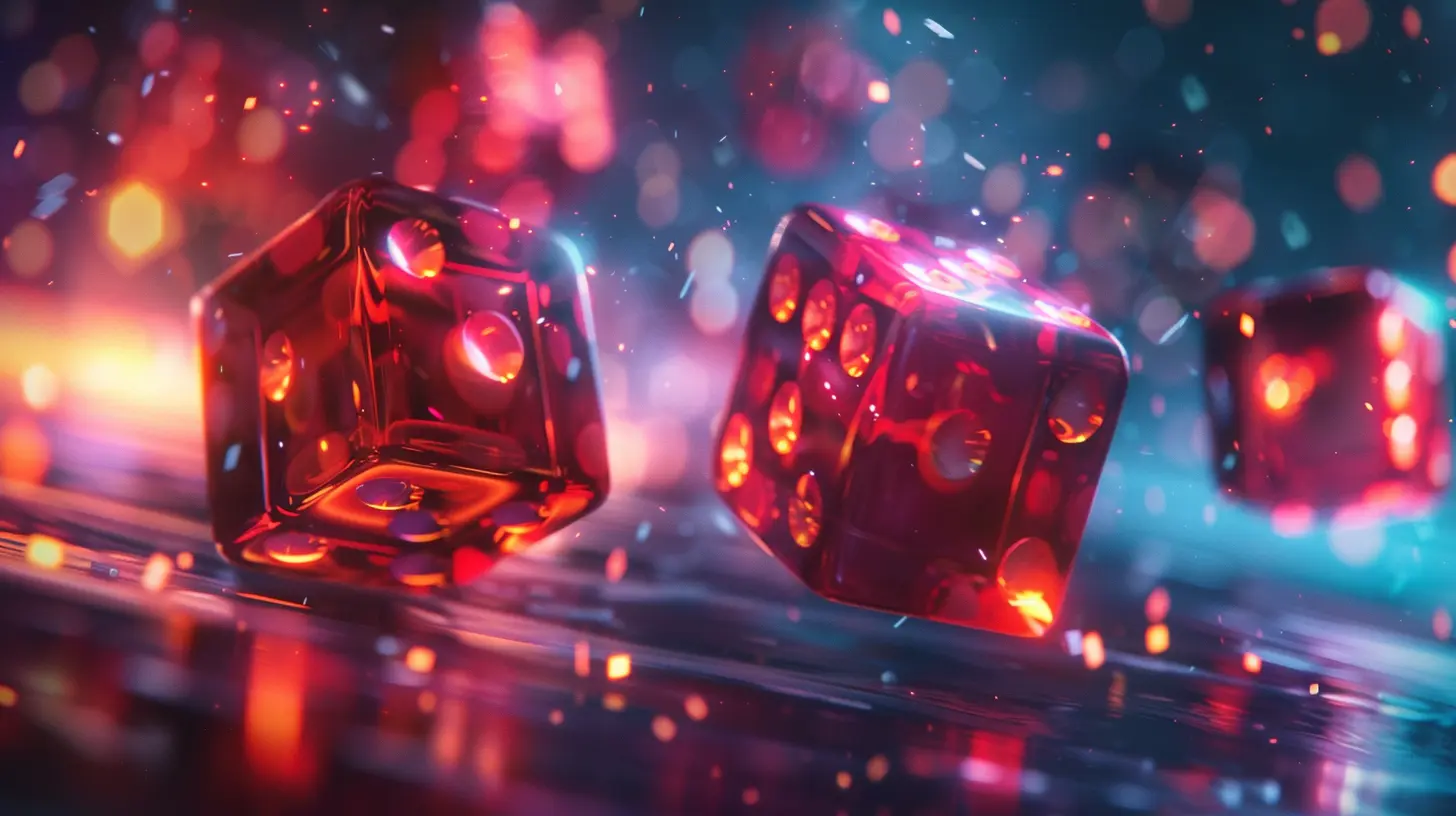How to Use Randomization in Game Design Without Leaving It to Chance
4 May 2025
Randomness and gaming go together like peanut butter and jelly – or maybe more like rolling dice and crossing your fingers. But here’s the thing: designing randomness in games isn’t as simple as throwing chaos into the mix and hoping for the best. No, my friend, true game design magic lies in using randomization without, well… relying on pure chance to do all the heavy lifting.
So, grab a coffee (or energy drink, I’m not judging) and let’s dive headfirst into how you can master the art of controlled randomness in your games. Don’t worry; we’re keeping this fun, light-hearted, and packed with actionable insights.

Why Randomization Even Matters in Games (Chaos Isn’t Always Bad!)
Let’s start by clearing the air: randomness isn’t your enemy. In fact, it’s often the secret sauce that keeps players hooked. Ever notice how addictive loot drops are in games like Diablo or Borderlands? Or how a procedurally generated dungeon in Hades feels fresh every time you play? That’s randomness doing its thing.Randomization keeps games unpredictable, replayable, and—most importantly—fun. But here’s the kicker: when randomness is overdone or poorly implemented, it can completely boomerang, leaving players frustrated and convinced the game hates them (we’ve all been there, right?!).
So, how do you use randomization wisely without making it feel like a total dice roll? That’s what we’re here to figure out!
The Sweet Spot of Randomness: "Controlled Chaos" Is Key
Let’s get one thing straight: nobody likes randomness that feels unfair. Imagine a game where victory or failure is entirely based on luck—talk about rage-quitting material! Instead, you want “controlled chaos.” Think of it like cooking with spices: too little, and the dish is bland; too much, and you’ve got a fire in your mouth.Controlled chaos means balancing randomness with structure. You want your players to experience unexpected twists without losing their sense of agency. After all, what’s gaming without the feeling that your choices matter, right?
Key Strategies for Using Randomization Without Leaving It to Chance
Okay, let’s get to the good stuff. Here are some surefire tips to do randomness right in game design—and trust me, it’s not just about spinning a wheel and crossing your fingers.1. Give Players the Illusion of Control
Here’s a pro tip: players love feeling like they’re in control, even when randomness is at play. This is where “illusion of control” comes in.For instance, in Pokémon games, when you throw a Poké Ball at a wild Pokémon, there’s actually a set algorithm deciding your success. But because you hit a button at the perfect moment (or so you think), it feels like you’re the one making the magic happen. It’s like letting someone feel like the captain of the ship but secretly steering it from behind the curtain. Sneaky, right?
How to Implement It: Add mechanics like timed inputs, skill-based modifiers, or even fake-out visual cues (like a spinning roulette) to make players feel like they’re influencing the random outcome.
2. Use Weighted Randomness (Because Real Randomness Is Brutal)
Let me tell you something: real randomness is a monster. Ever tried flipping a coin 10 times and getting heads… every single time? That’s randomness for you—ruthless. Players, on the other hand, expect randomness to look fair, even when it isn’t.Enter weighted randomness. This magical design technique tweaks probabilities to favor specific outcomes or behaviors. For example:
- A rare loot drop in an RPG might have increased chances on subsequent kills if the player hasn’t found anything good in a while. (Thank you, mercy rule!).
- An AI opponent in a strategy game might prioritize specific moves over randomly dumb ones so it doesn’t feel like playing against your goldfish.
How to Implement It: Adjust probabilities behind the scenes based on context, player progress, or even their frustration levels. The goal? Keep it fair and fun.
3. Use Procedural Generation with Boundaries
Procedural generation is basically randomization’s cool cousin who loves math and spreadsheets. It’s how games like Minecraft, No Man’s Sky, and Spelunky create endless, unique worlds without a dev team losing their sanity. But here’s the catch: procedural generation needs boundaries to work properly. Otherwise, you end up in some weird, broken space that feels like a glitch rather than a feature. (Looking at you, early No Man’s Sky.)How to Implement It:
- Define clear rules for your procedural systems. For example, in Spelunky, the game’s levels are generated within a grid with hardcoded rules for enemy placement, treasure, and traps. This keeps things surprising but never nonsensical.
- Test the heck out of your system. Seriously, run that procedural algorithm into the ground to make sure it doesn’t give players impossible levels or, worse, boring ones.
4. Blend Randomness with Predictable Patterns
Randomness shines best when paired with predictable game mechanics. Humans are pattern-seeking creatures; if everything feels random, players lose their sense of purpose. But sprinkle randomness into a predictable formula, and BAM—now you’ve got some spice.Take Hearthstone, for example. The card game uses randomness in its card effects, like “deal 2-3 damage,” but the overall game mechanics are grounded in predictable rules (mana costs, card draws, etc.). This balance keeps players engaged because they know the framework but always have an element of surprise.
How to Implement It: Use randomness to enhance smaller aspects of gameplay (like item stats, enemy behavior, or critical hit chances) while leaving the core mechanics stable and predictable.
5. Keep Feedback Clear and Transparent
You know what’s worse than bad random outcomes? Not knowing why they happened. Players need to understand the “why” behind in-game randomness. Otherwise, they’ll just assume your game is trolling them.For example, in XCOM, when a soldier misses a shot with a 95% success chance, players see that percentage up front. Sure, it’s still maddening when RNGesus betrays you, but at least you’re in on the math behind the madness.
How to Implement It: Add visual or numerical cues to help players understand what’s happening. Think percentage chances, countdown timers, or hints about potential outcomes.
Bonus Tips for Mastering Randomization
Still with me? Awesome. Here are a couple of rapid-fire bonus tips because you deserve it:- Test relentlessly. Never assume randomness will “just work.” Playtest your game to find unforeseen frustrations (we’re looking at you, RNG-heavy boss fights).
- Avoid extremes. Don’t rely on randomness too much, but don’t skimp on it either. A little unpredictability goes a long way.
- Player psychology matters. Random rewards should feel like gifts, not punishments. If a player earns rare loot after overcoming a challenge, they’ll feel like a champion. Randomness should enhance that feeling, not ruin it.
When in Doubt, Ask Yourself: “Is This Fun?”
At the end of the day, randomness is just one tool in your game design toolbox. The goal isn’t to make your game feel like a slot machine; it’s to create a memorable, engaging experience for players. When in doubt, just step back and ask, “Does this random element make the game more fun, or just more frustrating?” If it’s the latter, it’s time to tweak, adjust, and experiment.And remember, no game designer gets it perfect the first time. Even the geniuses at Nintendo, Blizzard, or FromSoftware have probably yelled at their screens during playtesting sessions. So don’t sweat it; you’ve got this.
Wrapping It All Up
Randomness is both a blessing and a curse in game design—but that’s what makes it so exciting. When done right, it adds layers of replayability, excitement, and challenge to your game. Just remember to keep the chaos controlled, the feedback clear, and the fun front and center.Oh, and if a player accuses your game of being “rigged,” take it as a compliment. That just means you’ve mastered the art of randomness without leaving things to chance.
all images in this post were generated using AI tools
Category:
Game DesignAuthor:

Aurora Sharpe
Discussion
rate this article
4 comments
Pearl McMurtry
Great article! Your insights on integrating randomization thoughtfully in game design are spot on. It's crucial to balance unpredictability with player agency, and you've highlighted effective strategies to do just that. Excited to apply these concepts in my own projects! Keep up the fantastic work!
May 15, 2025 at 3:29 PM

Aurora Sharpe
Thank you so much for your kind words! I'm glad you found the insights helpful and can't wait to see how you apply them in your projects!
Lucas Bishop
Embrace randomness; it fuels creativity and excitement!
May 6, 2025 at 4:30 PM

Aurora Sharpe
Absolutely! Randomness can inspire unique ideas and fresh experiences, but it's crucial to guide it with intention to maintain balance and coherence in game design.
Lisa Warner
Randomization is a powerful tool, but it’s not about luck. Master it strategically to elevate your game design and keep players engaged!
May 4, 2025 at 3:42 PM

Aurora Sharpe
Absolutely! Strategic randomization enhances gameplay and player engagement by introducing unpredictability while maintaining balance and control. Mastering it can elevate your design significantly.
Kenna Nguyen
Randomization in game design offers a delicate balance between unpredictability and player agency; harnessing it thoughtfully can enhance engagement, challenge assumptions, and create unique narratives without forsaking design integrity.
May 4, 2025 at 3:43 AM

Aurora Sharpe
Thank you for highlighting the importance of balancing unpredictability with player agency! Thoughtful randomization can indeed enrich gameplay and narrative while maintaining design integrity.



